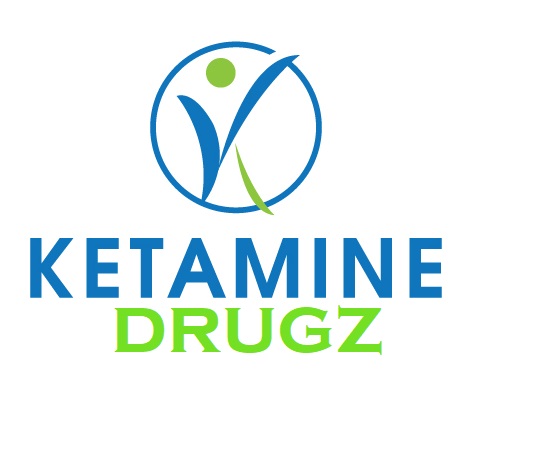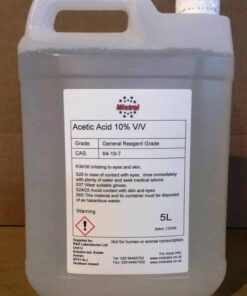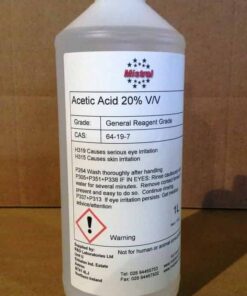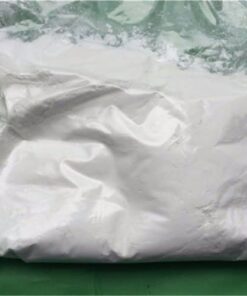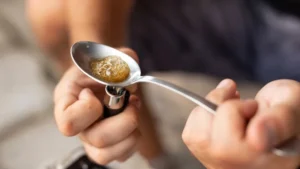For both Winograd and Coulter-Scott, and an estimated 70% of people who try medically supervised ketamine for a mental health condition, the benefits of ketamine continue after the trip is over. Researchers are studying why that may be. Here’s what they know so far: A few depressed people won’t have the drug trip that ketamine typically causes, yet they still report relief from depression, starting a few days after a dose. “When ketamine is in your system, you’ll likely have the dissociative effects, but that’s not the treatment,” Krystal says. “That’s just something you go through to get the treatment. The ketamine treatment is the reaction of your brain to ketamine, how your brain responds to exposure to ketamine.” The brain can respond in a few different ways depending on the state it was in to begin with. For example, some people with long-term depression lose some important connections in their brains (called synapses) that let nerve cells communicate. “We think that the number of synapses goes down because depression is so stressful that you actually prune or lose some of the synaptic connections in the brain,” Krystal says. But research shows that within 24 hours of the first dose of medically supervised ketamine, those lost connections start to regrow. The more synapses they grow, the better the antidepressant effects of ketamine are for them.
Effects of Ketamine
This substance is obtained from drugs that contain Ketamine as an active principle (Ketamine hydrochloride in solution). These drugs are presented in a colorless acid solution, for injectable administration intramuscularly or intravenously or intravenously, in vials.
They only contain ketamine hydrochloride and solvent; the method of obtaining the active principle in solid form consists of slow-drying in an oven at a medium temperature of 90-100º C.
In its solid presentation in powder form, it is used directly like cocaine, in the way of a line to snort; nasal absorption is carried out through a narrow and more or less long tube or tube, handcrafted for this purpose (with a banknote of the bank, usually).
Its liquid presentation is used with a syringe, injected, usually intravenously, very slowly. This presentation is only used in consumers with healthy addiction or who have generated high tolerance to the active principle.
It can be mixed with cocaine powder and snorted as well. Buy Ketamine online without script
With this substance, in low doses, you get a peaceful, dreamy feeling similar to laughing gas. Users report the sensation of floating slightly out of their bodies. Numbness in the limbs is also common.
Higher doses produce a hallucinogenic effect that can make the user feel very far from their body. This experience is called entering a “K hole”; it has been compared to a near-death experience, with the sensations of rising and detaching from the body. Many users find the experience spiritually significant, while others go through it frightened.
When a person is in a “K hole,” it is challenging to move, they remain seated or lying down during the experience, it is the safest.
Mechanisms of action
After 10-20 minutes of consumption, depending on doses, its effects begin to appear, with different times for each of them.
The first is the sensation of dissociation, appearing a state of unconsciousness and later very intense amnesia accompanied by the absence/imperception of pain (analgesia).
The total duration of the effects of consumption would be around two hours.
Ketamine Side effects
It produces hallucinations, flashbacks, alteration of attention, and memory.
Also, bradycardia, hypertension, arrhythmias, mild respiratory depression, laryngospasm, stridor in children, and dystonic reactions.
, it can cause increased intracranial and intraocular pressure, seizures, cardiorespiratory failure, polyneuropathy, trismus, and muscular hypertonia after an overdose.
How Quickly Does Ketamine Work? Buy Ketamine online
- An injection yields a quick response, with effects occurring in seconds to minutes.
- “Snorting” leads to effects in roughly 5 to 15 minutes (this is the most common method of abuse).
- Oral consumption requires between 5 and 30 minutes.
The effects of abuse typically last 1 to 2 hours, but the users judgement, senses and coordination may be affected for up to 24 hours or longer. Sensations the user may seek include floating, stimulation and visual effects.
High doses may dangerously reduce breathing, lead to muscle spasms or weakness, dizziness, balance difficulty, impaired vision, slurred speech, nausea and vomiting, and severe confusion.
Binge use, where the user indulges in the drug in excess amounts in a short period of time has been reported, as well.
Ketamine is a robust and rapid-acting antidepressant, albeit its effect is transient.Intravenous ketamine infusion in treatment resistant depression results in improved mood within 4 hours reaching the peak at 24 hours. The effect is diminished at 7 days, and most patients relapse within 10 days, although for a significant minority the improvement may last 30 days and longer. The main challenge with ketamine treatment is what to do when the anti-depressive action expires. The maintenance therapy with ketamine (from twice a week to once in two weeks) appears to be a promising option, although the evidence to firmly recommend it is insufficient. Ketamine may also decrease suicidal thoughts for up to three days after the injection. Ketamine may be effective for bipolar depression, but the data on its use is scarce
